Did you lose your boundary fence with public land in the bushfires?
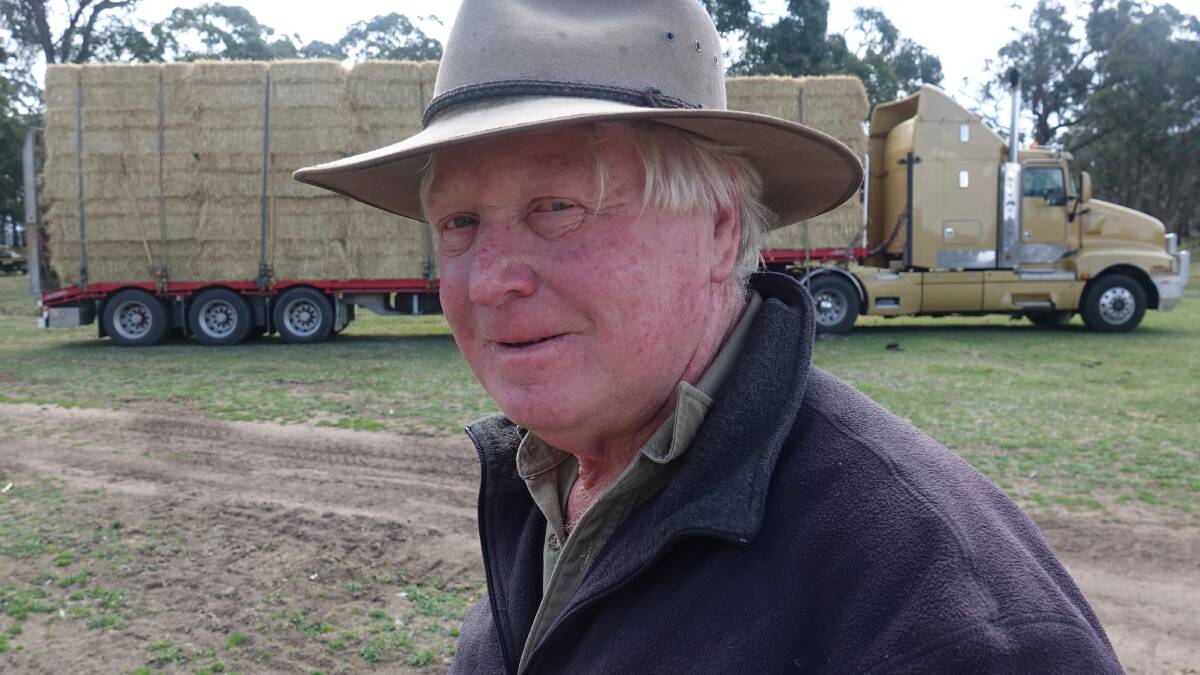
The Tenterfield Star reported that more than 240 landholders across the Northern Tablelands have received over $5 million to help rebuild boundary fencing bordering public lands destroyed during the 2019-20 bushfire season.
Eligible landholders can still receive grants from the ‘Supporting our Neighbours’ program and are being urged to apply through Local Land Services (LLS), with applications closing on Wednesday, 31 March 2021.
LLS Executive Director, Regional Operations Rob Kelly said on average Northern Tablelands landholders have received about $20,000 through the program to help cover the cost of lost boundary fencing.
“The road to recovery is long, but we’re still here to help people rebuild and reshape their properties after the devesting bushfires,” Mr Kelly said.
“Through this program, we can provide up to $5,000 per kilometre to purchase materials to rebuild fire damaged boundary fences with your public lands neighbour.
“So far, we have been able to help fund around 1,000km of fencing across the Northern Tablelands, which is great, but it’s important people continue to apply so they don’t miss out.
“This is one of the easiest support programs you will come across as we have a team of dedicated fencing coordinators to walk applicants through the entire process.”ADVERTISING
Glen Innes cattle farmer David Donnelly’s property was severely damaged during the 2019-20 summer bushfires, losing 4.6km of boundary fencing bordering public lands.
Mr Donnelly said the $23,000 he received through the Supporting our Neighbours program to help purchase fencing materials was crucial to getting his property up and running again.
“Losing boundary fencing made life very difficult on the farm, so it was critical to replace it as quickly as possible after the fires had gone through,” Mr Donnelly said.
“The staff at LLS helped every step of the way throughout the application process, and thanks to them we were able finalise the funds very quickly.
“This money helped not only to replace my damaged boundary fencing, but also allowed me to upgrade it to a better standard than before the fires, which will be great in the long run.”
Grants can be issued retrospectively to help cover the costs for those who have already replaced their fencing.
Applications close on March 31, 2021, with a dedicated team processing new applications as quickly as possible over the coming months. To find out if you are eligible and to apply, visit www.lls.nsw.gov.au/fencing or call 1300 778 080.
Bega country singer Felicity Dowd debuts at #1 on iTunes chart
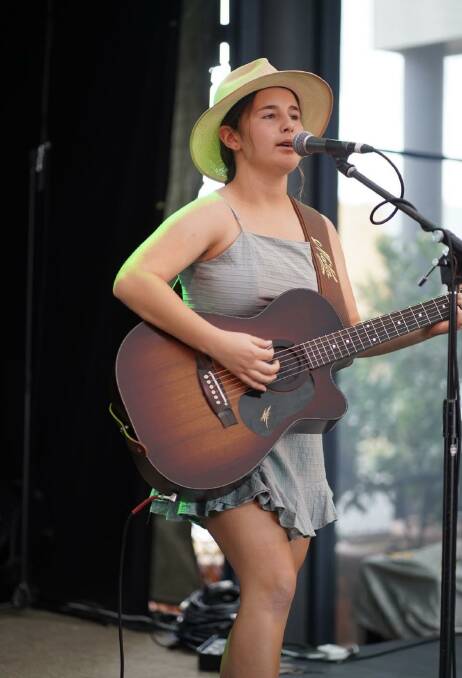
Bega District News reported that teenager Felicity Dowd’s first single has debuted at number one on the iTunes Country Songs Chart, helping bushfire-affected NSW South Coast communities along the way.
When Felicity saw the havoc wreaked by the NSW bushfires a year ago and the rebuilding since, she decided to do more than talk about it – she’s putting her musical talents to use.
The award-winning songwriter penned Blue Skies prior to the bushfires in response to all the natural disasters that Australians had lived through including drought, floods and cyclones.
“It was written about natural disasters in general, and little did I know what devastation would occur so soon after,” she said.
“After seeing the fires come down the coast and the rebuilding, the song really grew in meaning for me.”https://www.youtube.com/embed/wRQUXE1ZoIg?rel=0&enablejsapi=1
Blue Skies debuted at number one on the iTunes Country Songs Chart and number 25 on the iTunes All Genres Songs Chart.
The Year 12 student had been waiting for the right time and song to go into the recording studio to lay down her debut single and, following the bushfires, Felicity decided the time was right.ADVERTISING
It wasn’t just about getting her new music out there either. Felicity is raising money for the Cobargo Community Bushfire Recovery Fund through the sales of the single.
“I lived in Cobargo for five years and seeing what they went through, the town has a lot of meaning for me,” she said.
“I have lots of friends who live there who were impacted by the fires, it was the first place I ever busked and Cobargo Folk Festival was the first place I ever performed.”
Kosciuszko National Park and Paupong Nature Reserve hazard reduction burns

Mirage News reported that the NSW National Parks and Wildlife Service (NPWS) is planning two hazard reduction burns in southern Kosciuszko National Park and Paupong Nature Reserve from Thursday March 10th, weather permitting.
NPWS Branch Director Mick Pettitt said the 1000ha burn at Ingebyra in the southern Kosciuszko NP is approximately 25km south west of Jindabyne and the 760ha Paupong West burn is about 20km to the south east.
“These are strategic hazard reduction burns, to help limit the potential spread of wildfire to surrounding private properties and to protect park assets from fire impacts,” Mr Pettitt said.
“The burns are due to begin at about 11am and residents and visitors are reminded to drive to conditions and observe any warning signs or directions from fire crews.
“Public access to these areas and four-wheel drive trails will be closed during burning operations including the Paupong Fire Trail.
“Smoke from the burn program may be visible in the southern Monaro and north east Victoria for a number of days.
“We thank our neighbours for their understanding.
“People with asthma or who are susceptible to respiratory problems are advised to keep clear of the area or stay indoors.”
These burns are some of the many hazard reduction operations undertaken by NPWS across NSW each year, often with the assistance of the NSW Rural Fire.
Bushfire victim to spend second winter in caravan as supply scarcity continues
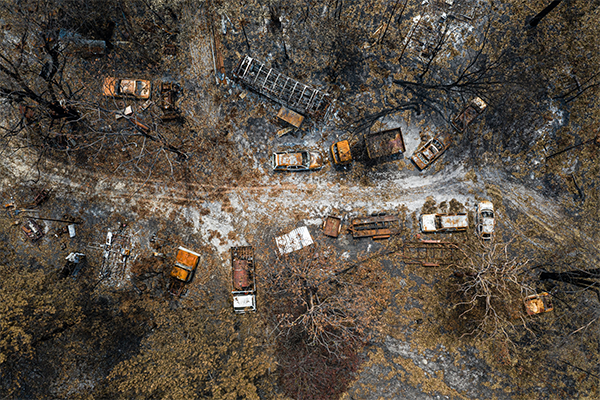
2GB reported that tradesmen and women are being urged to seek work on the bushfire-ravaged NSW South Coast as communities struggle to rebuild.
Bemboka resident Cath Healy found herself living in a caravan after the Black Summer bushfires destroyed her home and sheds, but one year on her rebuild remains unfinished.
She told Jim Wilson after being tied up in red tape for 15 weeks, the expected timeline won’t see her move in before winter.
“We’ve got frames up and we’ve just started today on a roof.
“It just seems to be either getting the contractors, getting workers, getting supplies – we ordered ovens and cooktops three months ago and they’re still not here.
“[Tradies should] come down to the South Coast. There’s plenty of jobs for you.”
Man involved in ‘deliberately lit’ bushfire was wearing emergency services uniform

7 News reported that there may be an arsonist within the ranks of NSW emergency services, according to police.
Police believe a fire that ravaged Sydney’s west late last year was “deliberately lit” and now they’re on the hunt for a man who can “assist with their investigation”.
They are circulating a picture of the man, where he can be seen wearing a high-vis orange uniform that belongs to emergency services.
He is described as being in his 30s, about 170cm tall, of slim build with dark, balding hair and wearing glasses.
On November 29 last year, a bushfire tore through Moxham Park in Northmead, near Parramatta, damaging a house and injuring four firefighters.
Have your say on bushfire protection plans
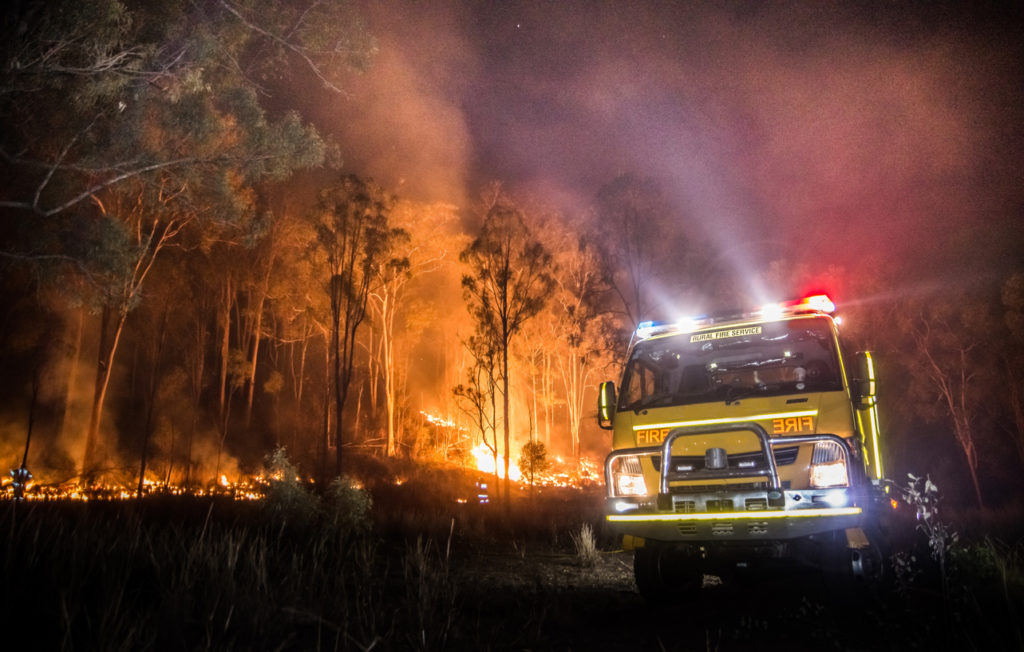
The Canberra Weekly reported that
Canberrans can now comment on the draft 10-year Regional Fire Management Plan to help protect our land, environment, and the community from bushfire.
The draft regional fire plan was issued by the ACT Parks and Conservation Service. It is based on new modelling technology to keep Canberrans safe from future bushfires while protecting threatened species and ecological communities, said Daniel Iglesias, executive branch manager of the Parks and Conservation Service.
The draft outlines how the fuel load in bush and urban fire risk zones – parks, commercial forests, and nature reserves – would be managed as the region recovers and regenerates from the “catastrophic” 2019–2020 bushfire season, Mr Iglesias said.
The 2019/20 bushfires burnt more than 83,000 hectares of conservation land and 3,000 hectares of agricultural land in the ACT – including the Orroral Valley fire, which ravaged Namadgi and Tidbinbilla.
The plan includes new fire management zones developed by the ACT Emergency Services Agency (ESA).
ACT ESA Commissioner Georgeina Whelan said the new bushfire management zones reflect the Territory’s changing environment and growing population, and were identified based on vegetation, fuels and location.
Asset protection zones within and around the city provide a defendable space to allow residents and firefighters a degree of safety before, during and after a bushfire, Ms Whelan said.
Strategic firefighting protection zones reduce the intensity and spread of fires across the landscape, and include easy access points such as fire trails, roads and creeks.
Online maps show proposed fuel management activities within the zones.
Community meetings will be held in coming weeks on the draft plan and the new fire management zones. Mr Iglesias said community and local environmental groups have important knowledge to inform the work across urban reserves, Namadgi National Park and Tidbinbilla,.
The community can also comment on the plan on the ACT Government YourSay website until 2 May.
Batlow chestnut farm springs to life with rain after devastating bushfire
The ABC reported that chestnut growers who were burnt out by bushfire last year in the NSW Riverina are now preparing for a cracking harvest after good rain.
It’s a huge turnaround for Terry and Christine Peel after their farm and house near Batlow were devastated by a bushfire in January 2020.
A little over a year on, the family is preparing to harvest one of their best chestnut crops on record.
Good rain throughout most of 2020 and more than 125 millimetres this year so far has revitalised their chestnut trees.
“They have really bolted and they are in really good shape,” Mr Peel said.
“We are looking at a 15-or-16-tonne crop this year.”
It’s a massive improvement from last year when they harvested just five tonnes.
New trees to take years to produce nuts
The Peels planted their first chestnut trees in 1986 and established their brand Featherdale Chestnuts.
When bushfire swept through their property, the family lost 260 chestnut, walnut and hazelnut trees.
Two of the walnut trees also held sentimental value.
Terry and Christine were gifted the trees as a wedding anniversary present.
“It’s looks like one will survive and one won’t make it,” Mr Peel said.
They have replanted 220 chestnut trees which will take four or five years to produce nuts.
The majority of the chestnut trees they lost in the bushfire were three years old.
“The trees we’ve replanted with are grafted trees so they will be a lot quicker to grow than the young trees that were burnt,” he said.
COVID-19 impacts harvest labour
While the Peels are preparing for bumper harvest, they are still trying to secure a local workforce for picking.
Chestnut harvest at the farm usually runs for six weeks, and in other years they have a family of five from the Solomon Islands help complete the job.
However, coronavirus travel restrictions have stopped the family from coming.
“We’re not too sure what will happen. We think we have some people lined up and if they keep to their work we will be pretty right,” Mr Peel said.
“It’s a shame our workers from the Solomon Islands will not be able to come, because they are such good workers.
“It’s tough for them also as they rely on the money they receive from us also.”
The family harvests their chestnuts differently from most growers, opting to harvest by hand over mechanical picking.
“We end up with a better quality product and they are cleaner and not contaminated when they go into storage,” he said.
They will also sell all their whole crop direct to the customers at Canberra markets.
While chestnuts have been the family’s mainstay for more than three decades, they have expanded into blueberries and figs since last year’s bushfire.
They have planted 100 blueberry trees and 50 fig trees.
“This will give us a bit more income in years to come,” Mr Peel said.
Rebuilding after bushfire
The couple’s house, packing and grading shed, and plant equipment were destroyed in the January 4 bushfire.
In an effort to rebuild their livelihoods on the land they have rebuilt the packing and grading shed.
Mr Peel has almost completed building a new chestnut grader.
“I wasn’t able to buy a new one as they are too expensive and the fact I’d built the previous one that was burnt.
“We just about have things back to where they need to be.”
While the farm is looking good — the couple has made the tough decision not to rebuild their house.
Due to their age and health they opted to buy an established home in Batlow.
Their son, Guy, has returned home to help run the farm since the bushfire and now lives in a transportable cottage on the property.
The family’s garden escaped the bushfire relatively unscathed, and Guy has incorporated the gardens into his new home on the farm.
Mrs Peel, a keen gardener, still visits the farm often to prune the roses and maintain the beds.
“I miss my garden, but I have adjusted and am quite comfortable in town,” she said.
Bushfire not the only battle
As well as rebuilding the farm post-fire and moving into town, Mrs Peel has been battling cancer.
She believes the stress of the bushfires triggered the return of cancer — a disease she beaten before.
“I’m going OK. I have treatment on a weekly basis in Wagga and hopefully I only have another couple to go,” Mrs Peel said.
“It’s just part of life and I just take every day and appreciate it.”
EducationMARCH 11, 2021 8:38 AM AEDTShare
Bushfire volunteers need more support after answering call
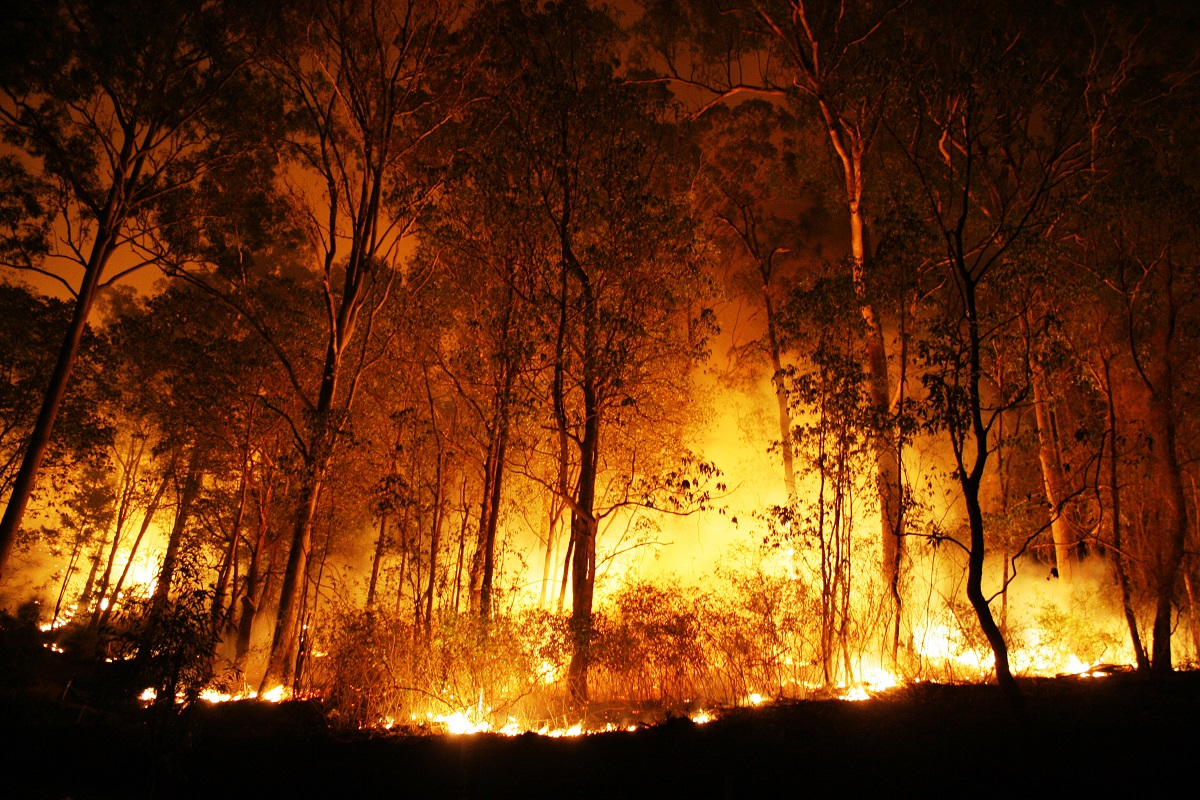
Mirage News reported that volunteers who endured the unprecedented intensity and severity of the 2019/20 bushfires – working on trucks, coordinating supports, looking after others and rebuilding – are still working through the traumatic events that devastated their communities.
It’s a largely overlooked aspect of mental health care that needs swift resolution – which is why volunteers are being asked by Flinders University’s Professor Sharon Lawn and David Lawrence from The University of Western Australia to participate in a study that aims to map out a better support solution.
“People I’ve met already are everyday members of communities directly and indirectly affected by the fires who pitched in to support each other – but in many cases that hasn’t been enough,” says Professor Lawn, who specialises in mental health research and is also the lead Mental Health Commissioner for South Australia.
“Often mental health issues develop slowly over a period of months or years. We know that many first responders in need of help often avoid seeking help in a timely fashion or don’t receive enough help for their needs. Volunteers are likely to reach out to family and friends first, and fellow volunteers and others in their communities, rather than reaching out to more formal supports.”
Professor Lawn will be continuing interviews with bushfire volunteers until the end of March 2021.
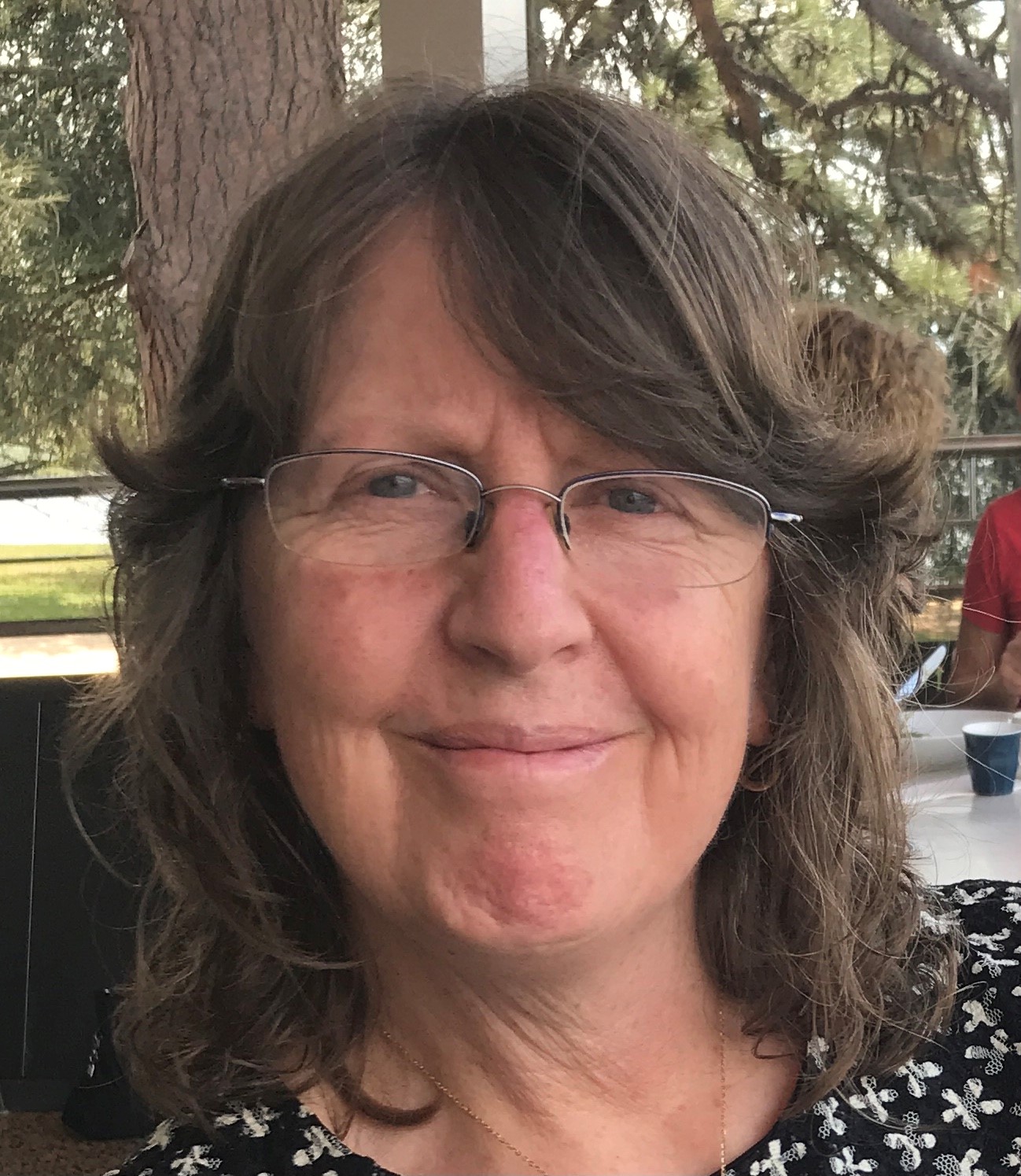
What has been learnt so far about supporting the wellbeing of emergency services personnel – identified in the report “Answering the Call: the first National Mental Health and Wellbeing Study of Police and Emergency Services”, on behalf of Beyond Blue – is that cumulative exposure to traumatic events can have negative consequences over the course of someone’s career and life, and emergency services personnel are at higher risk of developing mental health issues than the general population.
“The overwhelming majority of volunteers and paid firefighters do what they do because they want to serve their communities and help in times of need,” says Professor Lawn. “They care about their communities – and they are likely to be impacted, as anyone would be, when they witness disasters befalling their communities.
“One critically important factor is recognising changes in wellbeing early and seeking help when it is needed.”
Following the devastating 2019-20 bushfires, the Australian Government provided additional funding through the Medical Research Future Fund to support continuing research into the ongoing wellbeing of volunteer and paid first responders.
Now, through working with the Bushfire and Natural Hazards Cooperative Research Centre, Professor Lawn and her co-researchers will ensure their new information helps develop strategies and programs to most effectively support the wellbeing of Australia’s first responders.
“A challenge for our future bushfire preparedness is sustaining a volunteer workforce of sufficient size and capacity to be able to respond to large-scale events without overtaxing volunteers to the point where they are at risk of burnout,” says Professor Lawn.
She believes the answer requires two areas of attention – maintaining the existing volunteer workforce through providing necessary support, training and resources, and also recruiting and training new volunteers to meet the increasing demands of more intense fire seasons.
Over the next two years, the researchers will continue to connect with communities, to help understand what is needed to effectively support the long-term wellbeing of volunteer and paid firefighters, and how to foster their ability to cope both now and into the future.
“With a warming and drying climate, improving our understanding of how to effectively support the wellbeing of volunteer and paid firefighters is a critical part of preparing our nation for the possibility of further significant bushfire seasons in future years,” says Professor Lawn.
Local RFS long serving members recognised for their hard work and dedication
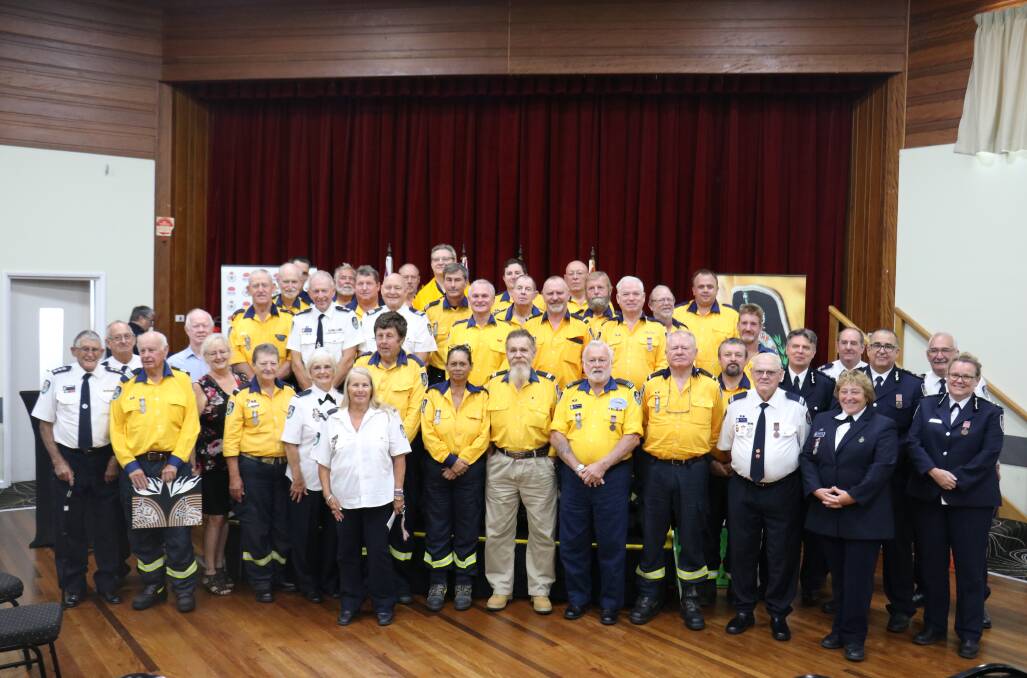
The Mecleay Argus reported that the NSW Rural Fire Service (NSW RFS) has applauded the achievements of 46 dedicated volunteers from Lower North Coast Zone with the presentation of national medals and long service medals for service to the community.
NSW RFS Deputy Commissioner Peter McKechnie joined State Member for Oxley, Melinda Pavey MP and other guests to mark the occasion.
Ms Pavey said the 46 members from both Nambucca and Kempsey have given a combined total of 1089 years of service to the lower north community.
“The members being recognised today with Long Service Medals and clasps ranging from 10 to 54 years of service, with a special mention of Valla Brigade’s Brian Pade for his impressive 54 years of service and Peter Brougham and Ron Henderson for 50 years of service each,” Ms Pavey said.
“Four volunteers were also justly awarded national medals and clasps today which are awarded for diligent service which goes above and beyond what is expected of brigade members.”
Recipients of the national medals include: Neil Gerard, Newee Creek Brigade (25 years’ service); Robert Barber, Valla Beach Brigade (38 years’ service); Allan Wardrope, Lower North Coast Aviation Brigade (39 years’ service) and Brian Beilby, Gladstone Brigade (45 years ‘service).
Deputy Commissioner McKechnie congratulated each of the Lower North Coast Zone volunteers on their dedication, commitment and service to their communities.
“You only have to look at the 2019/2020 season to see how hard our skilled firefighters and support crews work to keep us safe when fires and emergency situations threaten,” he said.ADVERTISING
He added the NSW RFS is committed to providing volunteer firefighters with the equipment, infrastructure and resources they need to carry out the important work of protecting their local communities from fire and a diverse array of incidents.
“I would like to take this time to praise all our volunteers for their ongoing efforts each and every day, particularly when dealing with emergencies here in the Lower North Coast.
“We also thank the family, friends, employers and colleagues of all NSW RFS volunteers. We know it takes their ongoing support and patience to assist and enable our volunteers to do what they do to save lives and property.”
National Medal Citations Macleay Valley
Allan Wardrope – National Medal 1st and 2nd Clasps. Long Service Medal 2nd Clasp
Years of Service: 39
Allan Wardrope joined the NSW Rural Fire Service in 1981 and has been an active member of Taylors Arm, South Arm, Willawarrin and Frederickton Brigades, and founding member of Lower North Coast Aviation Brigade.
Allan currently holds the position of Brigade Captain and Training Officer with the Lower North Coast Aviation Brigade.
Allan’s diverse operational background, combined with specialist Aviation skills, have proven invaluable during a wide range of local and out of area deployments.
Brian Beilby – National Medal 3rd Clasp
Years of Service: 45
Brian Beilby has been an active member of Gladstone Rural Fire Brigade for all his 45 years of service with the NSW Rural Fire Service.
Brian has attended an extraordinary number of incidents during this time, as well as participating in out of area deployments.
Brian has held every position within Gladstone Brigade, including a 15-year term as Brigade Captain, and currently holds the positions of Brigade President, Secretary, Senior Deputy Captain, Permit Officer and Training Officer.
Long Service Medals Macleay Valley
Cameron Dann – Long Service Medal for 10 years’ service as a member of Crescent Head Brigade.
Beverly Dunn – Long Service Medal for 10 years’ service as a member of Lower North Coast Communications and Lower North Coast Aviation Brigades.
Karen Blanch – Long Service Medal for 11 years’ service as a member of Yarrahapinni / Stuarts Point Brigade.
Helmet Meire – Long Service Medal for 12 years’ service as a member of Kundabung Brigade.
Anthony O’Leary – Long Service Medal for 12 years’ service as a member of Kundabung Brigade.
Mark Stevens – Long Service Medal for 13 years’ service as a member of Kundabung Brigade.
Alan Sayer – Long Service Medal for 14 years’ service as a member of Berridale and South West Rocks Brigades.
Joshua Kempton – Long Service Medal for 16 years’ service as a member of Clybucca Brigade.
Stephen Dunstan – Long Service Medal for 17 years’ service as a member of Kundabung Brigade.
Nace Parkin – Long Service Medal for 20 years’ service as a member of Kundabung Brigade.
Nace joined Kundabung Rural Fire Brigade in 1999 and has held the position of President, Senior Deputy Captain, Deputy Captain, Permit Officer and First Aid Officer.
Nace is currently the Brigade Captain, Executive Officer and Vice President.
Gavin Larkins – Long Service Medal for 20 years’ service as a member of Gladstone Brigade.
Gavin joined Gladstone Rural Fire Brigade in 2000 and holds the position of Equipment Officer and Executive Officer.
Rhonda Browning – Long Service Medal for 21 years’ service as a member of Crescent Head Brigade.
Rhonda joined Crescent Head Rural Fire Brigade in 1999 and has held the positions of Secretary, Executive Officer, Equipment Officer, RFSA Representative and First Aid Officer.
David Young – Long Service Medal for 22 years’ service as a member of Yarrahapinni / Stuarts Point Brigade.
David joined Yarrahapinni / Stuarts Point Brigade Rural Fire Brigade in 1997 and has held the position of Vice President, Deputy Captain, Training Officer, Equipment Officer and Permit Officer.
David is currently the Senior Deputy Captain of the Brigade and Executive Officer.
Joanne Watts – Long Service Medal for 23 years’ service as a member of Crescent Head and LNC Community Engagement Brigades.
Joanne joined Crescent Head Rural Fire Brigade in 1998 and has held the position of Vice President, Deputy Captain, Training Officer, Equipment Officer and Permit Officer.
Joanne is currently the Senior Deputy Captain of the Brigade and Executive Officer.
Mark Riedel – Long Service Medal for 24 years’ service as a member of Hornsby Heights, Mt Kuring-Gai and Kundabung Brigades.
Mark Riedel joined Hornsby Heights Rural Fire Brigade in 1996. He has also been a member of Mt Kuring-Gai and now Kundabung Brigade and has held the positions of President, Vice President, Treasurer and Executive Member.
Mark Riedel is currently the Deputy Captain of Kundabung Brigade.
Owen Finch – Long Service Medal for 30 years’ service as a member of Aldavilla Brigade.
Owen Finch joined Aldavilla Rural Fire Brigade in 1989 and has held the position of Vice President, Senior Deputy Captain, Deputy Captain and Equipment Officer.
Owen Finch is currently the Brigade Captain, Executive Officer, President, RFSA Representative, Permit Officer and Training Officer.
Douglas Matthews – Long Service Medal for 30 years’ service as a member of South West Rocks Brigade.
Douglas joined South west Rocks Rural Fire Brigade in 1989 and has held the position of Senior Deputy Captain, Deputy Captain, and Permit Officer.
Peter White – Long Service Medal for 40 years’ service as a member of Yarrahapinni / Stuarts Point Brigade.
Peter joined Yarrahapinni / Stuarts Point Rural Fire Brigade in 1980 and has held the position of President, Vice President, Equipment Officer and Permit Issuing Officer.
Peter is currently the Brigade Deputy Captain.
Darren Rogers – Long Service Medal for 40 years’ service as a member of Yarrahapinni / Stuarts Point Brigade.
Darren joined Yarrahapinni / Stuarts Point Rural Fire Brigade in 1980 and has held the position of Senior Deputy Captain and Deputy Captain.
In 2009 Darren became the Brigade Captain and Permit Officer.
RFS captain Beth Raines is being celebrated with a Local Woman of the Year Award
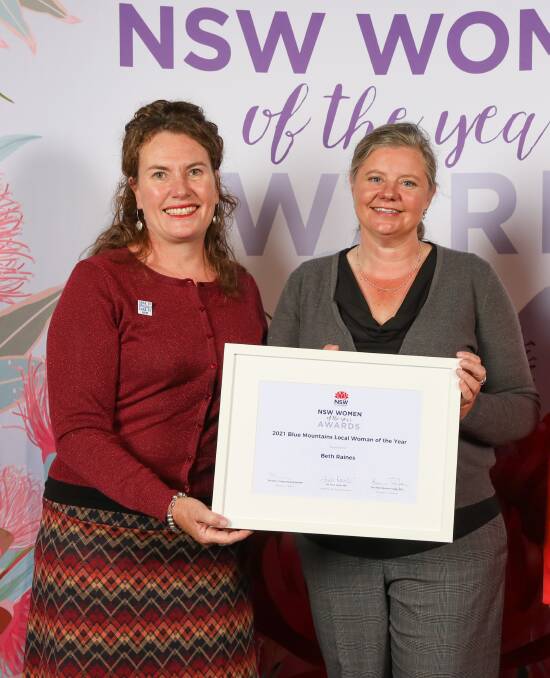
The Blue Mountains Gazette reported that
Member for Blue Mountains and Shadow Minister for Women, Trish Doyle commended Ms Raines on the achievement – Blue Mountains Local Woman of the Year for 2021 – acknowledging her hard work for the region.
“I congratulate Beth on this acknowledgement of her remarkable achievements and the continuing incredible work she does for our community” Ms Doyle, who presented the award to Ms Raines, said.
“Beth epitomises the qualities of a good leader. She is a compassionate human being, honest and with a gift for handling a crisis with far more than just technical expertise.”ADVERTISING
The Local Woman of the Year Awards is an annual program which recognises and celebrates the support women give to their local communities throughout NSW, acknowledging the achievements of women as part of International Women’s Day each year.
Tragically Ms Raines lost her own home during the Black Summer Gospers Mountain fire, whilst fighting to save the homes of other members of her community, a home that had been built by her parents and steeped in family history.
“I can only imagine how horrific that time must have been for Beth. The resilience she has shown and the utter selfless way in which she contributes to her work and her community is awe-inspiring” said Ms Doyle.https://16c91bbdbe4add509bb39c8e49c3e1e3.safeframe.googlesyndication.com/safeframe/1-0-37/html/container.html
She added “Beth Raines is an inspiration to women everywhere and I could not have felt prouder, being there to join in the celebration of her courage and dedication.”
The NSW Women of the Year Awards was held at the International Convention Centre, Sydney on Wednesday March 10, 2021. At the event Dr Kerry Chant was nominated as NSW Women of the Year.
Nowra firefighter Victor Judson celebrates 52 years with the RFS
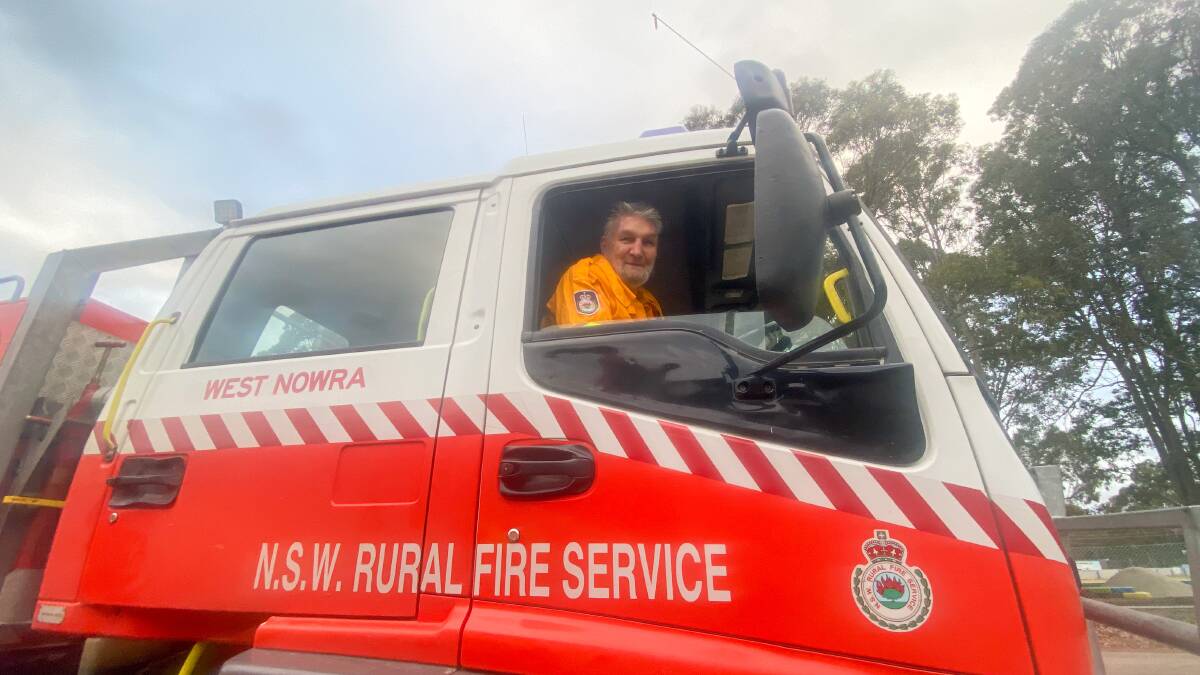
The South Coast Register reported that West Nowra firefighter Victor Judson is marking 52 years of exceptional service with the RFS.
The West Nowra RFS members gathered at their station on Tuesday night and celebrated with speeches and cake to commend Mr Judson’s long-standing dedication to protecting the community.
Mr Judson has attended countless fires, both local and out of area as well as firefighting for Sydney Water and with the National Parks and Wildlife Service.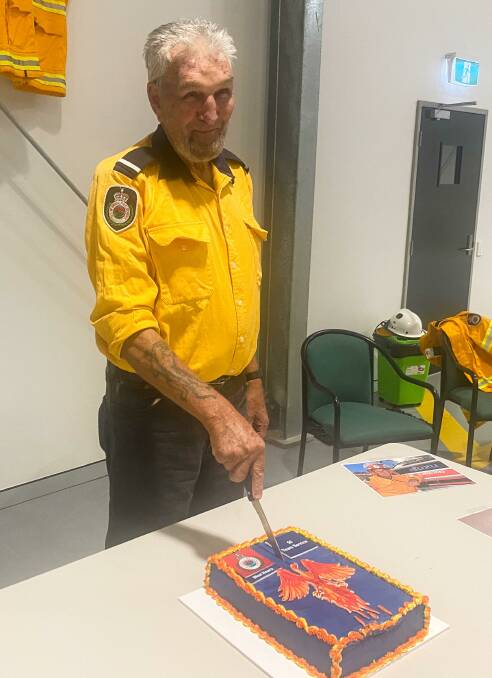
Exceptional service: Victor Judson cuts a cake to celebrate 52 years of service with the RFS.ADVERTISING
He first joined the RFS Appin Brigade in 1969. Mr Judson then transferred to the Cambewarra Brigade in 1988 and transferred to Illaroo Road Brigade in 1999.
Today, he is still fighting fires as a deputy captain.
He said one of his favourite parts of the job has been watching firefighting evolve over the years.
“When I joined, we had brass fitting nozzles and 30 kilo knapsacks made of steel,” Mr Judson said.
“You just went and did what you had to do, there was no training like there is today, it used to be all out on the field.”
Asked whether he had any standout memories, Mr Judson said all of the big fires have stuck with him.
“Some of the big fires that I worked on in 2001 and 2002, and the last ones we’ve had always stay with me. They’re always different. But the last one we’ve had is the worst one I’ve ever seen. And I don’t want to see another one like that,” he said.
“I will also always remember going down to Victoria when they had the Black Saturday fires.
“But let me put it this way, after 50 years, when you’ve been out and pulling people out of cars, you start to not let it affect you.
“One way to deal with these things is to always talk about it with your crew.”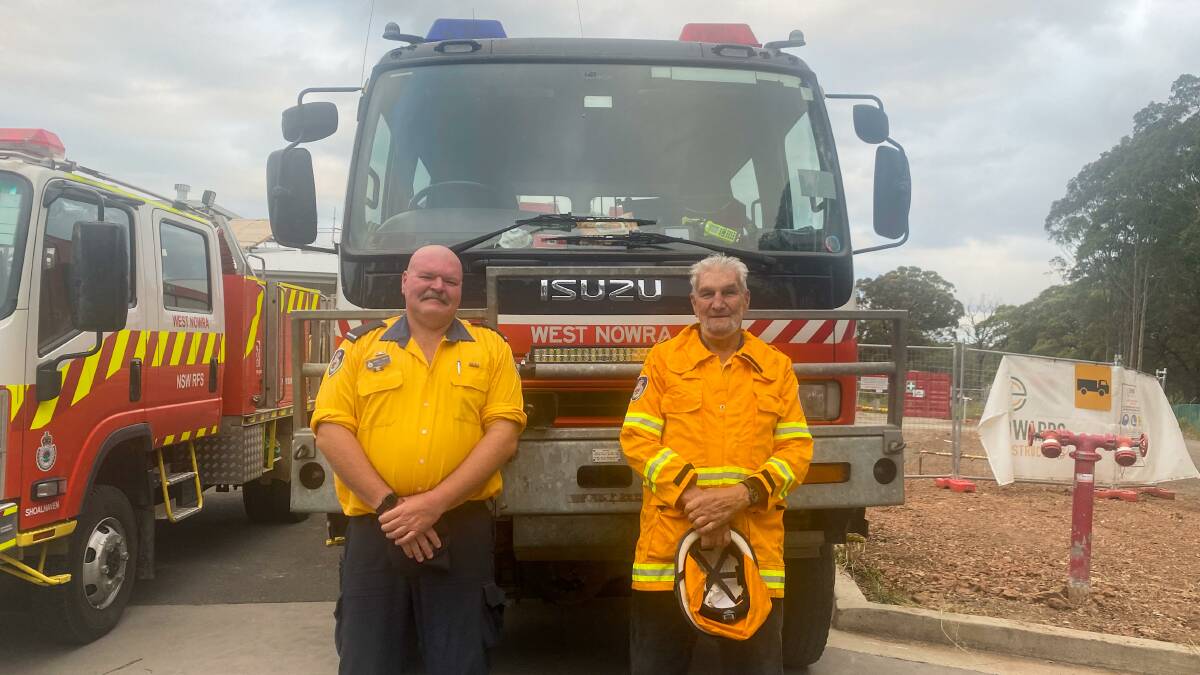 +4West Nowra RFS members celebrate long-serving deputy captain Vic Judson
+4West Nowra RFS members celebrate long-serving deputy captain Vic Judson
Over the years, Mr Judson has received many accolades and rewards for his service, including a 50 year bushfire brigade service medal, and two long-service awards for 25 years and 15 years.
The Judson family of North Nowra have well and truly provided exceptional service to the RFS. Between Victor, Michael and Greg, they have more than 100 years of combined service, with Greg Judson giving 36 years to the service.
During his speech, Captain Mark Oddy said: “For me, Victor is more than just a bloke who has long service. He’s a bloke that I learn from every time I talk to him.
“Victor represents our roots.”
Autumn smoke haze part of essential fire protection work

About Regional reported that the haze of hazard reduction smoke is almost synonymous with autumn across the NSW south-east but this year authorities are urging residents to be forewarned in order to prevent triggering any bushfire-related anxiety.
With the Black Summer bushfires still looming large in many people’s memories, this year’s burns are more important than ever.
The NSW National Parks and Wildlife Service (NPWS) is carrying out a number of hazard reduction burns near many properties that were affected by the Black Summer bushfires but not directly impacted by the flames. A spokesperson said they were essential to reduce the potential spread of wildfires to nearby properties and habitat, and were being coordinated with assistance from the NSW Rural Fire Service and Fire and Rescue NSW.
The burns are being carried out on the Far South Coast, in the Eurobodalla, Shoalhaven and Southern Tablelands areas.
NPWS branch director Mick Pettitt said smoke from the burns may be a trigger for some people after the bushfires but they were necessary.
“Undertaking these burns will help manage the potential risk of bushfire to communities and the environment, and provides firefighters with safe zones and access where they can defend properties should a bushfire occur,” he said.
“These areas were not directly impacted by fire in either the summer of 2019-2020 or 2020-2021, and it is important these burns go ahead to help protect residents from future fire events. It will also help to maintain biodiversity and reduce fuel loads in the area.
“We thank our neighbours for their understanding. People with asthma or who are susceptible to respiratory problems are advised to keep clear of the area or stay indoors.”
The NPWS was forced to postpone a similar burn in Brindabella National Park, near Canberra, earlier this month due to concerns that smoke would impact local grape-growers who were heavily affected by smoke taint from the Black Summer bushfires.
The 600-hectare burn in the Powerline area, just across the NSW/ACT border to the west of Canberra, will be held when conditions are more suitable.
“Smoke from the burn program may be visible in the Canberra area, in Wee Jasper and in the Brindabella Valley for a number of days,” Mr Pettit said.
Details on specific burns will be made available in advance on the NSW Rural Fire Service website, as well as the ‘Fires Near Me’ app, and on the NPWS Alerts website, which also includes updates on resulting park closures.
Salvos bushfire recovery crew team bring hope to Hawkesbury
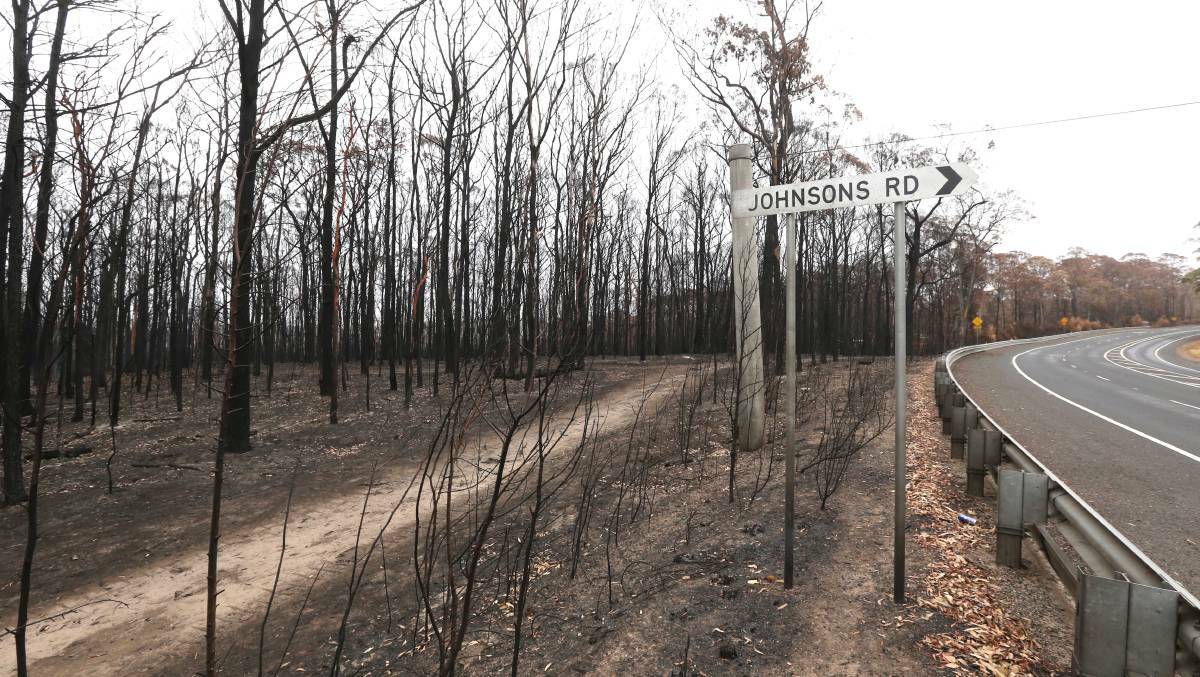
The Hawkesbury Gazette reported that the Salvation Army’s Mobile Bushfire Disaster Recovery team will be at the Kurrajong Bowling Club car park, from 9am to 4pm on Tuesday, March 16.
The Salvos team will be providing information and support to residents, including financial counselling and some new grants.
Residents who qualify may be eligible for a variety of grants, including a hardship grant, total loss grant, or household goods grant.
Chaplaincy and Salvation Army outreach services will also be available.
“This is a great opportunity to get practical, free and confidential advice,” said Salvos Bushfire Recovery project officer Ja Davis.
“It’s been 12 months since last year’s devastating bushfire disaster, but we know that many people are still experiencing hardship.
“If you’re struggling, whether it is financially, mentally or spiritually, please come along, we’re here to help.”
The Salvos team will be providing information and support to residents, including financial counselling and some new grants.
Residents who qualify may be eligible for a variety of grants, including a hardship grant, total loss grant, or household goods grant.
Chaplaincy and Salvation Army outreach services will also be available.
“This is a great opportunity to get practical, free and confidential advice,” said Salvos Bushfire Recovery project officer Ja Davis.
“It’s been 12 months since last year’s devastating bushfire disaster, but we know that many people are still experiencing hardship.
Council spend on bushfire recovery
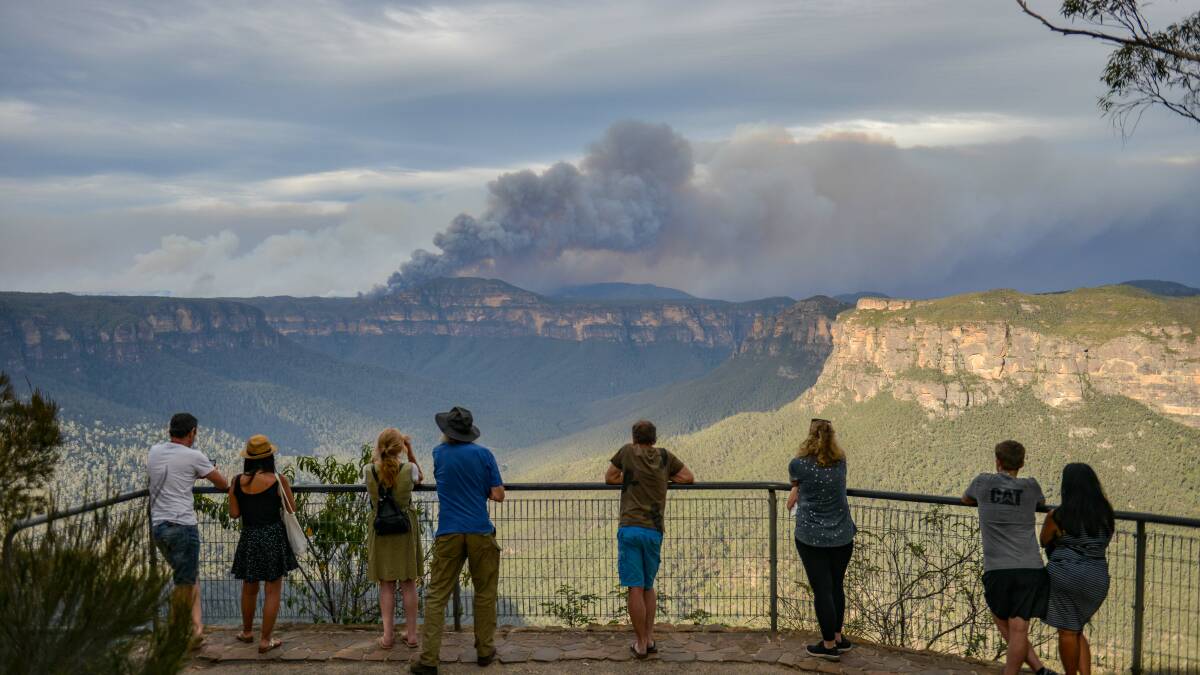
Blue Mountains Gazette reported that bushfire recovery grant money has been used to support Mountains residents whose properties burnt, provide counselling, legal and health advice and help revive tourism and battered small businesses.
A substantial amount was also spent on waste removal, restoring burnt infrastructure such as road signs and guide posts and removing or pruning more than 1,200 trees along roadsides to ensure safe travel.
Details of how council spent more than $1.5 million was outlined in a report by the CEO at the last council meeting.
Dr Rosemary Dillon said council had received a $1.3 million grant from the commonwealth and $250,000 from the state government.
Further grants delivered the Wollemi Artisan Markets in Katoomba and will fund the installation of art in five Katoomba laneways.
Dr Dillon noted other smaller grants, including from Greater Sydney Local Land Services which was earmarked for managing erosion and weeds in some of the most severely burnt areas as well as fox control in the Upper Mountains.
A resilience officer has been employed with grant money to help identify community needs and to develop local recovery programs.
Dr Dillon’s report came as Senator Marise Payne announced two additional grants last week.
The Blue Mountains World Heritage Institute will receive $130,000 for its project, Community response for fire recovery in the Blue Gum Forest and Grose Valley.
The project will examine all parts of the valley ecosystem in relation to climate and fire, with modelling and future management scenarios mapped out.
The Institute will work with the National Parks and Wildlife Service, Sydney University, volunteer citizen scientists from the Blue Mountains Conservation Society, Wildplant Rescue, WIRES and local bushcare groups.
Blackheath’s Campbell Rhododendron Gardens will also benefit with $12,500 to replace boundary fencing and stabilise a major watercourse running through the gardens.
The Blue Mountains Rhododendron Society of NSW, which manages the gardens, will receive the money.
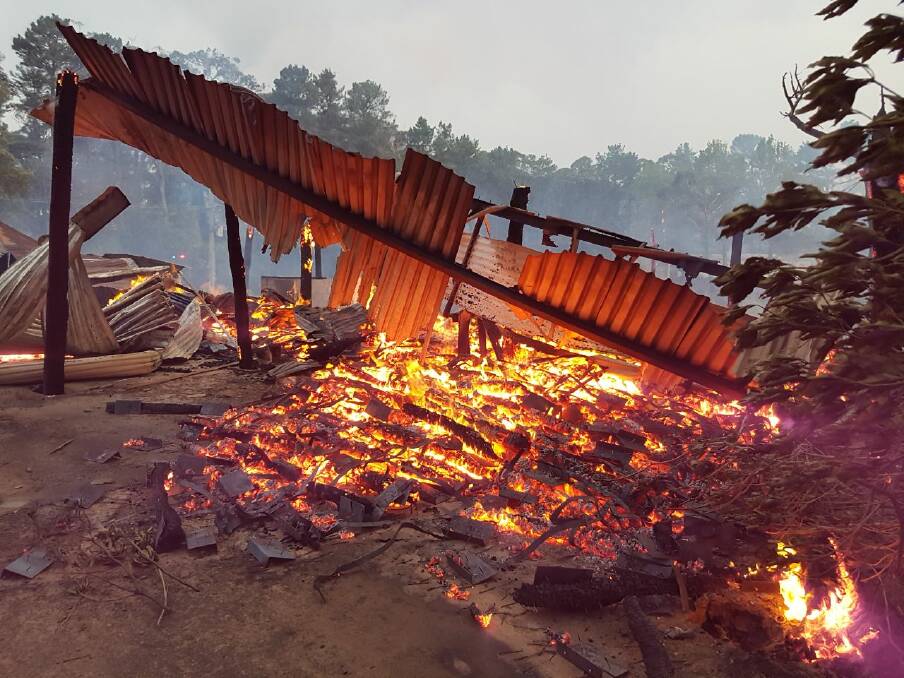
The Mountains missed out on any money in stage one of the state government’s local economic recovery fund. Some $177 million was allocated, all but $2.5 million going to Coalition-held seats.
Dr Dillon’s report noted that council had submitted applications for six key projects in stage two of the grant. These include for the continued development of the Cliff Top Walk, the rehabilitation of the Charles Darwin Walk and for improved capacity in the dam at Blackheath Golf Club, used by fire fighters.
